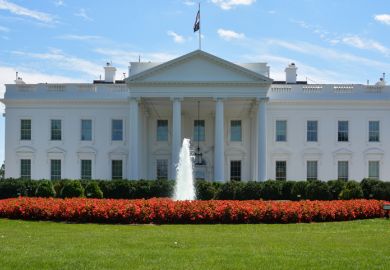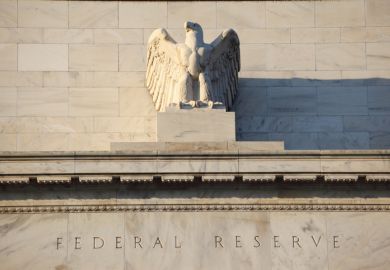The US has had a second straight year of decline in the number of students earning college degrees, in a record-setting drop that is part of a mounting body of evidence that any success in raising the perceived value of higher education is not overcoming the nation’s flattening population rates.
The new tally, for the 2022-23 academic year, showed the total number of people earning any undergraduate credential in the US – bachelor’s degree, associate degree or certificate – fell by about 100,000, or 2.8 per cent.
That slide almost certainly reflects the effects of the pandemic shutdowns, among other factors, including longer-term population shifts and economic stresses on low-income students, according to the National Student Clearinghouse Research Center, a non-profit organisation that collects such data on behalf of US colleges and universities.
The evidence pointing toward cost includes the much sharper rate of decline in associate degrees, after the pandemic had a disproportionately heavy effect on enrolment at community colleges, the traditional home for lower-income and minority students. The number of first-time associate degree earners fell by 8 per cent, compared with 3 per cent among bachelor’s degrees, the Clearinghouse found.
The community college sector “is certainly at risk of continuing decline, and I think that’s very bad news”, given the important role that two-year institutions play in many states in supplying students to their four-year campuses, said Douglas Shapiro, the executive director of the Clearinghouse.
Already, the 2.8 per cent drop was the steepest the Clearinghouse has ever recorded, Dr Shapiro said. And while the total number of credentials issued in the US peaked in 2021, the number of first-time earners hit its high point in 2017 and has fallen since, he said.
The Clearinghouse report on undergraduate credentials follows a series of other troubling recent indicators, including declines in new undergraduate enrolment, record rates of closures of among non-profit institutions, high costs of attendance, and even some surprising losses of interest in elite universities.
The most recent enrolment numbers, also tracked by the Clearinghouse, showed that first-year enrolment fell nearly 4 per cent in the current academic year. About 15 non-profit colleges and universities closed last year, after 23 the year before, nearly double the previous single-year high.
Application figures, where available, are more current, given that institutions are currently shaping their classes for the coming academic year. Even there, Harvard University – the nation’s most famous institution, but also subject to heavy negative political scrutiny in recent years – has acknowledged that it saw its freshman applications for the 2024-25 year shrink by 5 per cent.
And several private US colleges and universities are setting annual prices – for tuition, housing, and other expenses – nearing $100,000 (£80,000), while the total debt owed by college borrowers sits at roughly $1.7 trillion. In that environment, conservative politicians are fighting Biden administration attempts to grant broad loan forgiveness, arguing that such relief helps institutions avoid necessary belt-tightening and refocusing on career-centric priorities.
Yet the heavy loss of enrolment at community colleges, Dr Shapiro said, suggests the US may not be supporting even the segment of higher education most attuned to job-specific post-secondary training. The community college option, he said, “has been one of the most promising – if not always the most successful – paths to access to the bachelor’s degree for lower-income and disadvantaged students.”
Register to continue
Why register?
- Registration is free and only takes a moment
- Once registered, you can read 3 articles a month
- Sign up for our newsletter
Subscribe
Or subscribe for unlimited access to:
- Unlimited access to news, views, insights & reviews
- Digital editions
- Digital access to THE’s university and college rankings analysis
Already registered or a current subscriber? Login








